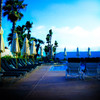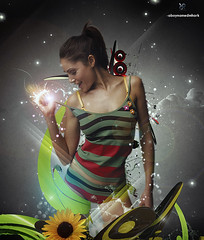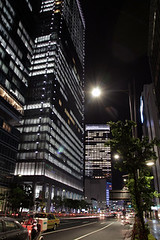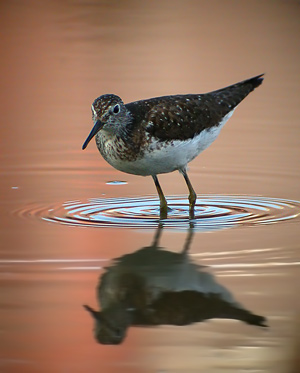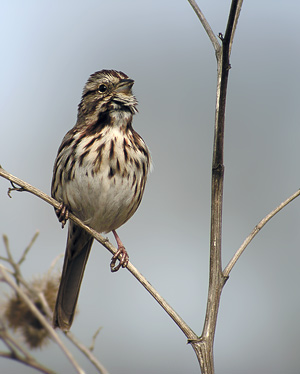Solitary Sandpiper
I saw my first "fall" migrants while biking to work this morning, foraging at a drainage pond with suitable mudflats near Market Street. After reports of shorebirds arriving in Wisconsin at Horicon, I figured it would be only a matter of days until a few southbound birds would discover the relatively isolated oasis. I found Solitary Sandpipers and Lesser Yellowlegs, but there were also Great Blue Herons, Killdeer, Ring-billed Gulls, Canada Geese, and a variety of songbirds around the pond's edge.
The bike route I take when commuting to work consists of side streets, bike trails, dirt trails, and part highway. I was extremely elated to see these shorebirds this morning, knowing it will make a great spot for digiscoping that's very close to my apartment. However, my elation was temporary. I came upon a freshly killed Song Sparrow at the short section of Highway 14 I traverse before turning into the business park. Last week I found a dead Northern Cardinal and Barn Swallow at this same spot.
Yesterday I did a 20-mile bike ride over country roads north of Middleton. I found dead Savannah Sparrows, Barn Swallows, and American Robins (mostly juveniles). But I also observed many living birds, including Great Blue Heron, Red-tailed Hawk, Sandhill Crane, Belted Kingfisher, Red-bellied Woodpecker, Eastern Kingbird, Warbling Vireo, Blue-gray Gnatcatcher, Field Sparrow, and Dickcissel. Happy, sad, happy, sad, happy, sad.
Birding and trying to be environmentally green can be mutually exclusive, but I am finding it increasingly difficult to personally justify driving my car when visiting natural area for the purpose of viewing and photographing birds - the carnage along our roads is really quite disturbing and stifles any sense of enjoyment I might otherwise derive. But I'm not there yet. It's an ideal I will likely fall short of for the rest of my life. Lest we forget, generally what's bad for birds can be bad for other animals as well. Though I blog primarily about the plight of birds, there are high numbers of mammal road kills, too.
When relocating out of necessity, I intentionally chose an apartment close to where I work and bird (Pheasant Branch Conservancy). One practical benefit from biking to work is that it was mid-June when last I filled the gas tank of my Toyota Corolla. I realize my personal situation is the exception and the overwhelming majority of people have to commute via automobile because biking to work just isn't practical. Come winter, though, I will be far less inclined to give up the convenience of being warm, but I may try snow biking! I'll likely snowshoe to work a few times, too.
In the struggle for existence, it's birds that keep losing. Does a loser necessarily imply a winner? And if so, is it us? What are we really winning? I confess an inclination to photograph dead birds I find along roads and post the pictures to my blog, but I also feel it would be somewhat disrespectful. But if I ever were to do so, I would likely have the bird out of focus in the foreground, very low profile angle to get cars in the photo, and the setting sun in the background. Can you visualize it? But what would I write to accompany this image? Perhaps nothing. Just let the picture tell it.
Sixty million birds die via collision with automobiles each year. This is a difficult number to visualize, but if we placed one dead bird every square foot, the total space covered would be 2 square miles. When I saw the dead Song Sparrow this morning, I pondered and speculated about its life. From where did it migrate? How many seasons did it have? Was it a parent? It probably began its day like most others; waking before sunrise, singing from a perch as stars slowly faded into the dawn sky. In what would be its last, it asserted itself to take wing, perhaps to get something to eat or claim territory on the other side of the highway. The sparrow had a story. But now, like the cardinal, it's story isn't actually over. I will see it transform daily from what first appeared as an intact sleeping bird to become a flattened pile of brown feathers. As for the cardinal, its bright red is still detectable, but stained by dirt and dried blood.
© 2009 Mike McDowell

